|
|
 |
|
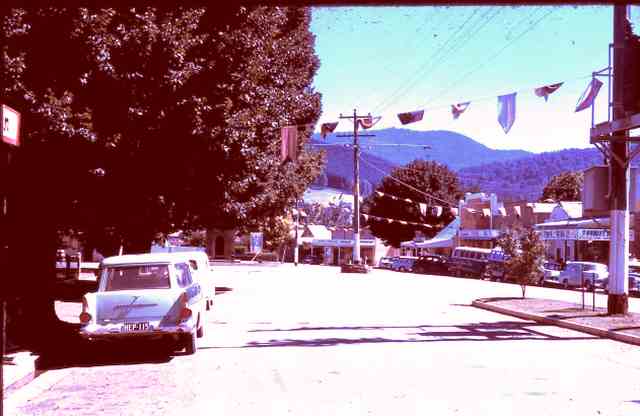
|
| 1960* Main street |
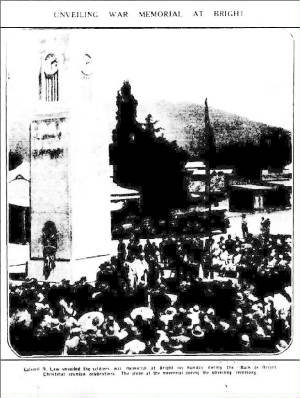
|
| 1929 Unveiling War Memorial |
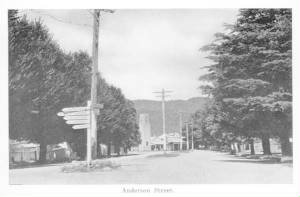
|
| 1950 Main street in Bright |
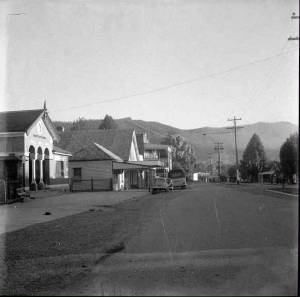
|
| 1955 Main street |
Considered within Victoria, Bright's Street Trees and other trees on public land present an unequalled display
of exotic planting styles from the late nineteenth century to the post World War Two period. Coupled with this, is the maturity
and health of most of the trees and the associated built elements from some of the periods, including the stone shelter and
gates.
Each planting era matches a phase in the development of the town for tourism and public amenity,
parallelling the town's early role as a tourist destination and the gradual decline of the previous mining economy and the
forestation needed to remedy its legacy.
The street and public trees of Bright, above
all towns in the State, provide substantial evidence of a distinctive and long-term dedication to forestry and tree planting
to enhance the tourist potential and amenity of the town. The choice and disposition of trees is also unusual (bunyas, alternating
with cedars).
Bright's trees have been judged favourably by newspaper correspondents and
lauded in tourist publications since the late nineteenth century for their aesthetic merit and the enhancement of the aesthetic
experience of the town. The trees have also been the focus of local publications over the years and recently identified and
valued in the Bright community workshops.
The early cemetery plantings (bunyas, cedars) are linked with the notable
botanist von Mueller whose name is also linked with early exploration of the area.. |
|
| |
History
Following the proclamation of the Shire
of Bright in 1866, improvements to the town included an extensive and ambitious street tree planting scheme. Exotic deciduous
trees planted included oaks, elms, poplars, maples, dogwoods and chestnuts. Bright's street trees have long been a key element
of the town's special character and visual beauty, and have played a key part in the promotion of Bright for tourism, which
began in the 1887, with the formation of the Bright Alpine Club and the publication of its first guidebook to the district.
This described the streets as "profusely planted with English trees" and claimed that the "beautiful tints . . . serve to
revive old England in a way that probably no other town in the Australian colonies can do."
Early
praise for Bright's street trees came in 1889 from a visiting journalist, Telemachus (alias Francis Myers), who observed that
the elms and poplars "already overtop the one-storey houses". When the Vagabond, visiting shortly before, had failed to comment
on the trees, the local paper complained that he missed seeing the town "with the halo of Easter thrown over it". Telemachus's
indication that the trees were relatively substantial in height by 1889 suggests that the first plantings probably occurred
in the 1870s. It is highly likely that they were selected by the government botanist, Ferdinand Mueller, who carried out a
large-scale disbursement of seeds and plants from the Melbourne Botanic Gardens during the period 1859-73. The fact that Mueller
provided the ornamental trees for Bright Cemetery in 1873 suggests he may have also been involved in the selection of the
town's street trees, although no record of this has yet been found.
The Bright Progress Association
proposed extending the street tree planting in the early 1900s. Paralleling the opening of the road to Mount Buffalo in 1908,
the association's tree planting plans advanced with the belief that further planting would improve the experience of visiting
the town as well as keeping down dust for tourists. This was also a period when soil conservation of the denuded mining slopes
around Bright and Myrtleford inspired the planting of exotic forests.
A photograph by Nicholas
Caire taken c.1920 shows medium-height oak trees in Ireland Street. Further planting reputedly took place in the 1930s, no
doubt as part of a scheme to further beautify the town. This was complemented from 1916 by the large-scale planting of "Pinus
insignia" (later "P. radiata", Monterey pine) by the Forestry Department on the former mining sites surrounding the township.
Although principally a measure to combat soil erosion, this also advantaged tourism by keeping down the dust from old mines
and by generally beautifying the area.
The annual Autumn Festival, first held in 1963, relies
significantly on the striking backdrop provided by the diverse array of exotic trees.
In the
1980s a tree walk was developed for visitors to the town and the Forests Commission published a guide, "The Street Trees of
Bright".
|
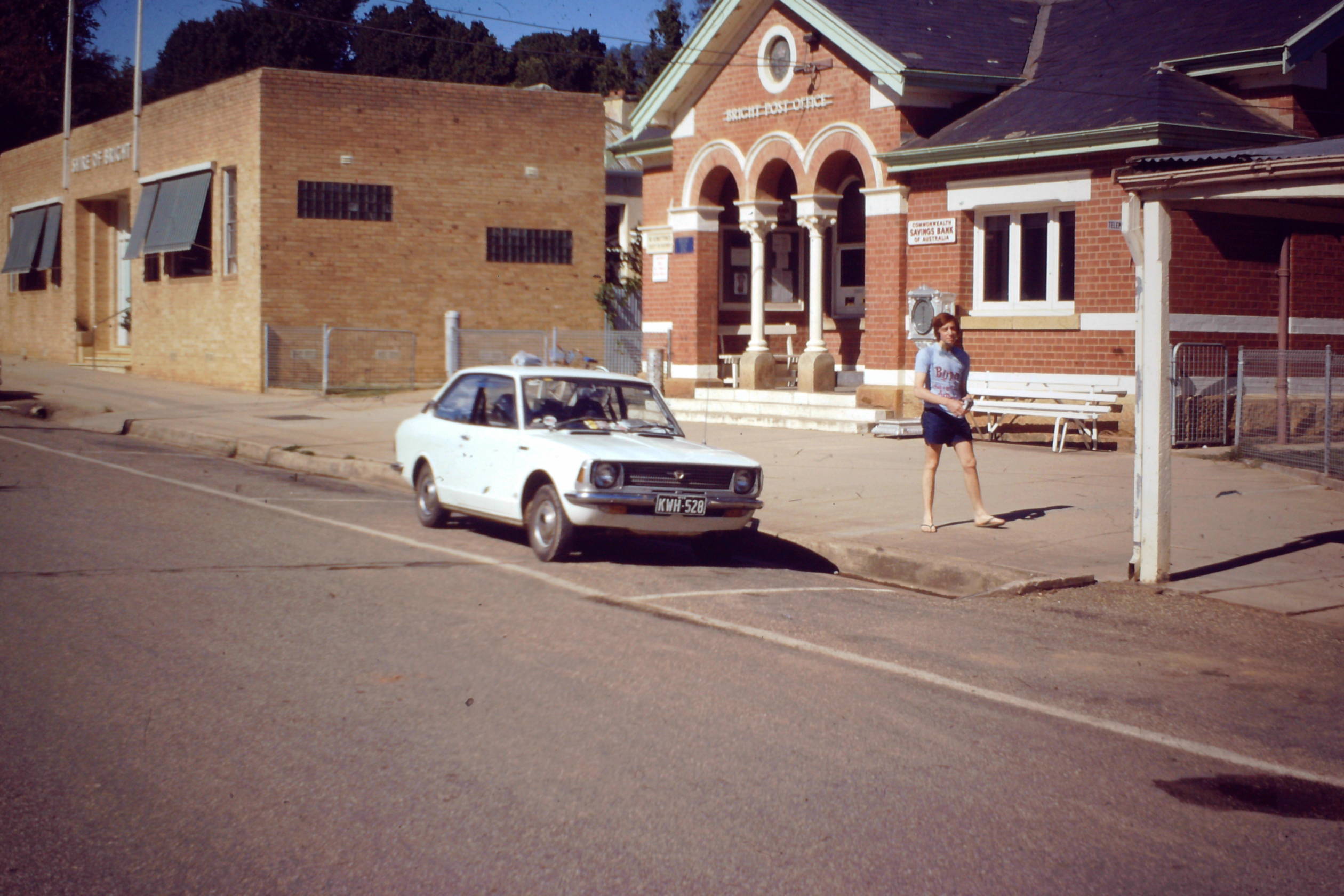
|
| 1975* Old Post Office (my car and my mate!) |
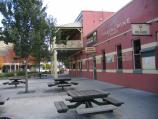
|
| 2010* Alpine Hotel |
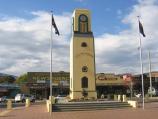
|
| 2011* Clocktower |
|
 |
|
|
|
|
|
 |

